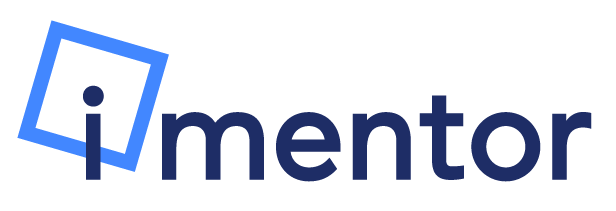Why We Conduct an Interview
To assess the safety and viability of a mentor applicant
To provide key matching criteria to the Program team
To reinforce program requirements that are covered during the mentor orientation
The interview helps us assess if an applicant is Safe, Appropriate, Collaborative, and Mission Aligned.
ATTRIBUTES | INDICATIONS |
SAFE | Any biases/prejudices |
A strengths-based approach to working with young people | |
Realistic expectations of a student | |
APPROPRIATE | Ability to listen actively, think strategically, problem solve |
Any professional, volunteer or personal experience with first generation, low-income students of color | |
Awareness of systems of oppression and personal privilege | |
COLLABORATIVE | Commitment level |
Availability and potential scheduling conflicts | |
Logistical preferences | |
MISSION-ALIGNED | Opinion on college access, post-secondary pathways, career success. |
Motivation for mentoring (also a safety consideration) |
Concerns in these areas may result in flags or rejection to the iMentor program.
Pre-interview Checks
It is important to review the mentor’s application and progress in screening in advance of the interview. The screener should review the application to confirm if the applicant:
Meets our age requirement (at least 21-years-old).
Has approved definitions. If not, request new definitions. If already requested, remind applicant to respond.
Speaks additional languages. If none are listed or if fluency level is unclear in the application, please inquire during interview and include in Match Notes.
Shares any interesting facts or makes any disclosures in the Anything to help match with mentee, Reflection or Disclosure sections that may need probing, attention or follow up.
Pre-plan any follow-up questions and consult your manager if needed.
Noting the applicant’s progress in the Ending Logistics section of the template allows the screener to review outstanding steps and address any questions at the end of the call.
Ending logistics
Now I just wanted to go over our timeline and what’s left in your screening process:
(SCREENER – Prepare transcript in advance, noting progress below. During the interview, review outstanding steps and note applicant responses.)
APPLICATION COMPLETE? (Remind to complete if SAI or Walk In)
2. REFERENCES COMPLETE? If 2/3 are approved, no follow up needed. If not, ask applicant to remind outstanding references to complete.
MENTOR CONTRACT? If not on file, ask Did you receive your Mentor Contract from DocuSign? If NO: Please check your inbox and spam folder for an email sent from [email protected] via DocuSign. Confirm email address (EMAIL).
4. BGC: If not complete, review region-specific instructions and ask for an update when scheduled. (BGC talking points)
MENTOR TOGETHER (IF NEEDED)- I will note your preference to be matched with (PARTNER NAME). Is your participation contingent on being matched together?
DISCLOSURE ASK (IF NEEDED)- I noticed that you disclosed (a misdemeanor/felony) in your application and wanted to give you the opportunity to share more detail for the record.
MATCHING TIMELINE (what to expect distinct to each region)
Mentor Applicant Interview Script
The following is a basic outline and overview of the mentor interview script.
Introduction:
The introduction clarifies that the purpose of the interview is to get to know the applicant so we can make the strongest and most relatable match between them and a student. It also lets applicants know that challenging subject matter may be discussed and that screeners will be taking notes.
Requirements/ Logistical and Matching Opportunities:
Program requirements are reiterated, logistical details and preferences are confirmed and the applicant’s commitment to the program requirements is ascertained.
Life Experience:
This portion of the interview focuses on the mentor applicant. The purpose of these questions is to gain insight to be used for matching, such as personal, educational and professional areas of interest and experience. This section also captures special qualifications and youth-serving experience that may be helpful in a mentoring relationship.
Motivation and Mission Alignment:
The goal of this question group serves a few purposes: to gauge the mentor applicant's motivation for mentoring, to understand the applicant’s ability to engage across difference and to ascertain that they understand their role as mentors. These questions probe for things like biases, savior complexes, enhancing grad school applications or resumes, or possibly even more unsavory motivations such as criminal intent.
These questions also allow the screening team to evaluate a mentor applicant’s relationship to their own identity and understanding of their privilege. Lastly, we see this section of the interview as another way to communicate iMentor’s DEI philosophy. We seek to ensure that our applicants are on board with the DEI work that undergirds everything we do as an organization and that they have the shared context to best support our students and communities.
Scenarios:
Scenarios not only allow screeners to further evaluate applicants for things such as safety, appropriateness, relationship to DEI, flexibility and consistency but also allow us to manage expectations around realities of the program.
Conclusion:
This is usually an open-ended question which allows the applicant to share anything that might not have been covered in the interview.
Ending logistics:
The screener goes over logistical pieces such as next steps in the screening process, outstanding items in the application and the matching timeline for the applicant’s region.
Match Notes:
Match notes are a formatted and concise way to communicate important mentor logistics, preferences, salient life experiences, skills, interests and personality to program managers for matching purposes.

